20 Montessori Nursery Ideas for A Kid-Friendly Space (original) (raw)
Creating a Montessori nursery is more than just designing a room; it’s about fostering an environment where your child can thrive through independence and discovery. By embracing Montessori principles, you craft a space that’s not only functional but also beautifully aligned with your child’s developmental needs. For inspiration, you might explore these 20 pretty Montessori nursery ideas, which can help guide you in creating a nursery where everything is intentionally placed at a child’s level, allowing them the freedom to explore, learn, and grow. From low shelves filled with thoughtfully selected toys to soft, natural lighting that soothes, every element contributes to an environment that encourages curiosity and creativity.
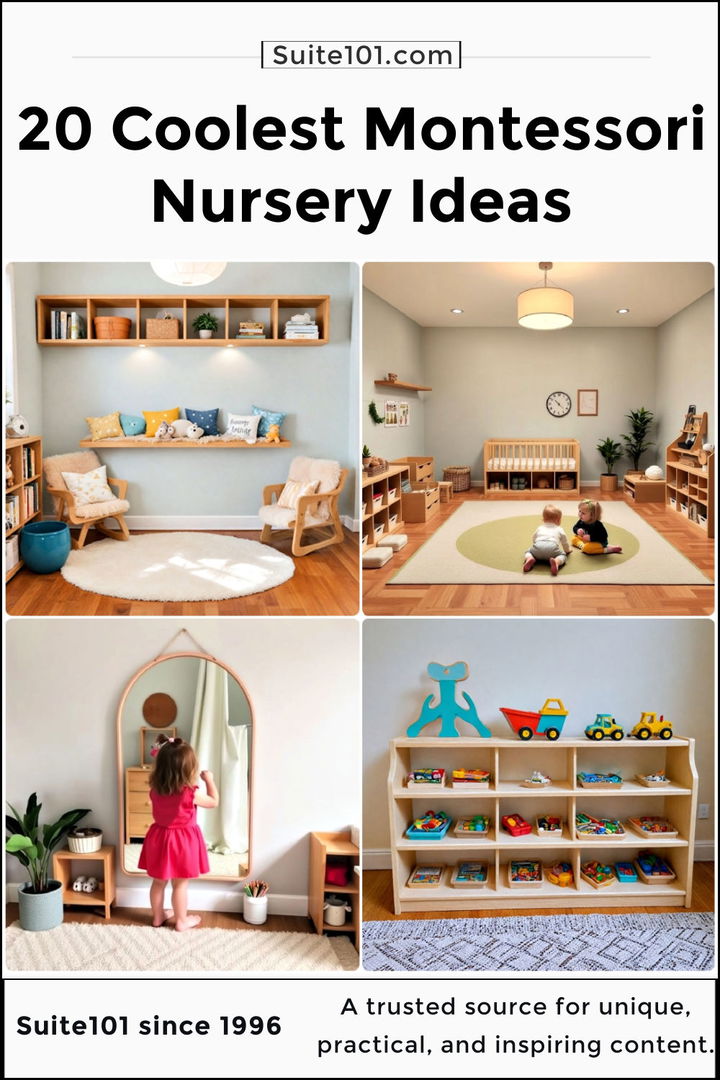
One of the most essential aspects of a Montessori nursery is how it promotes your child’s autonomy. With features like floor beds and child-sized furniture, your little one can engage with their surroundings independently, building confidence along the way. By incorporating nature-inspired decor, sensory baskets, and practical life areas, you invite your child into a world that mirrors real life, fostering not only imagination but also a strong sense of connection with the world around them. This careful blend of design and purpose creates a nurturing, child-friendly space that supports both emotional and cognitive growth.
1. Low Shelves for Easy Access
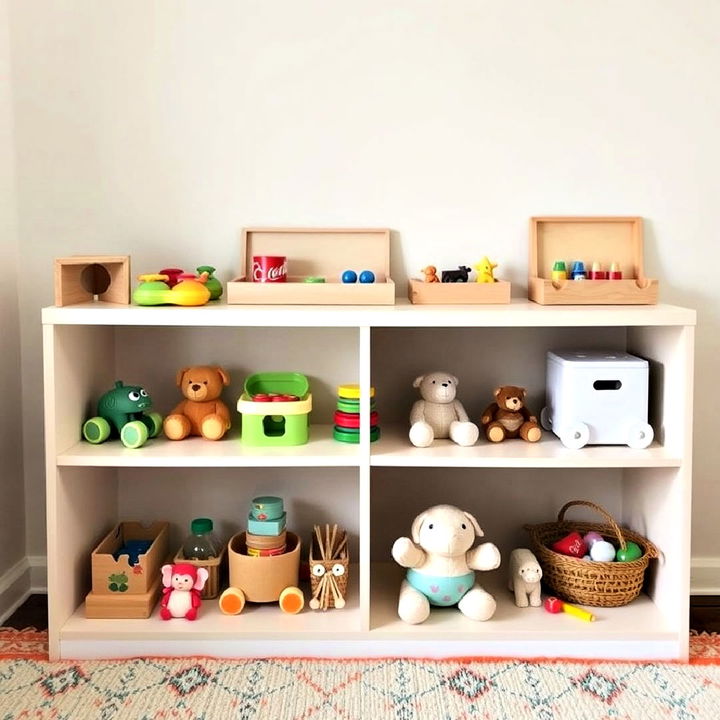
Low, open shelves allow children to easily see and choose their own toys or activities. By having items within reach, toddlers can independently select what they want to play with, fostering decision-making skills and independence. Additionally, it encourages a sense of responsibility as they learn to return items to their designated places. Keep the shelves organized and uncluttered, using baskets or trays to neatly store materials.
2. Soft, Natural Lighting
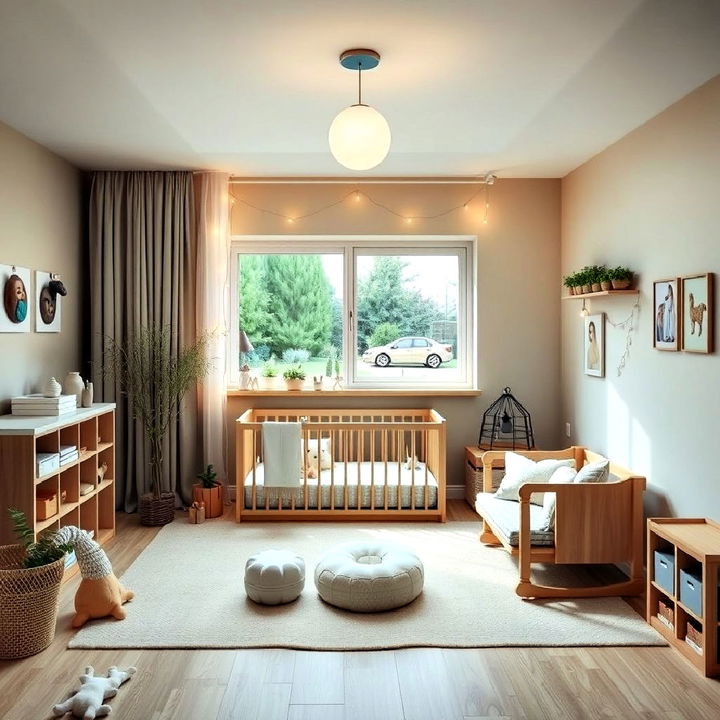
Soft lighting in a nursery creates a calm and soothing atmosphere, essential for young children. Using natural light as much as possible helps to connect children with their environment and promotes a sense of serenity. Soft lamps or string lights can be used to supplement lighting, avoiding harsh overhead lights that may overstimulate. This helps maintain a peaceful environment conducive to focused play and learning.
3. Floor Beds for Freedom of Movement
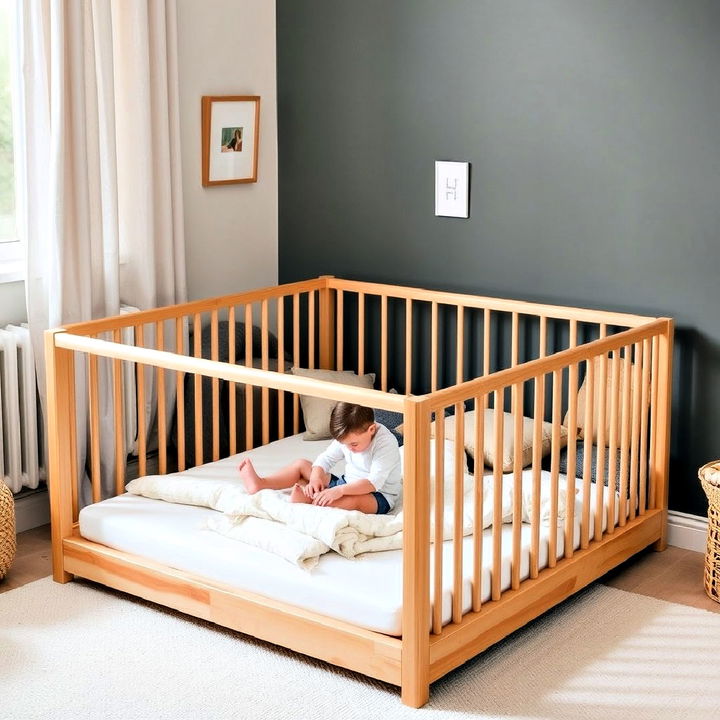
Discover calming and functional Montessori nursery ideas that foster independence and creativity for your little one. Floor beds provide a Montessori-friendly alternative to traditional cribs, allowing babies the freedom to move in and out of bed as they please. This promotes independence, as children can begin to regulate their own sleep routines and explore their environment safely. The design also eliminates the need for barriers, encouraging a sense of openness and trust. Opt for a low mattress on the floor, ensuring a safe and soft landing for any adventurous moves.
4. Minimalist Decor to Reduce Overstimulation
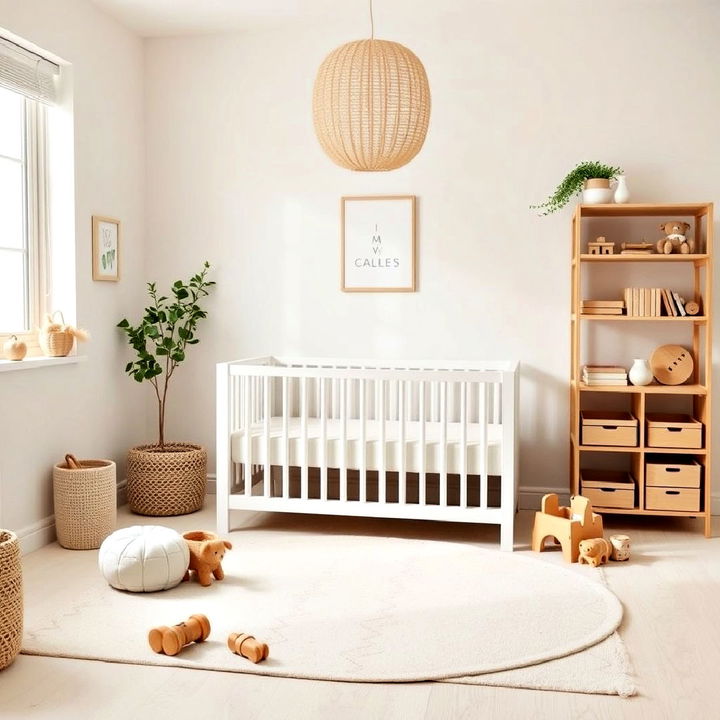
A Montessori nursery thrives on simplicity and order, and minimalist decor is key to achieving this. By keeping the room clutter-free with neutral colors and simple furnishings, children are less likely to feel overwhelmed or distracted. This encourages focus and concentration during playtime or learning activities. Select just a few essential toys and decor items, ensuring everything serves a purpose.
5. Child-Sized Furniture for Independence
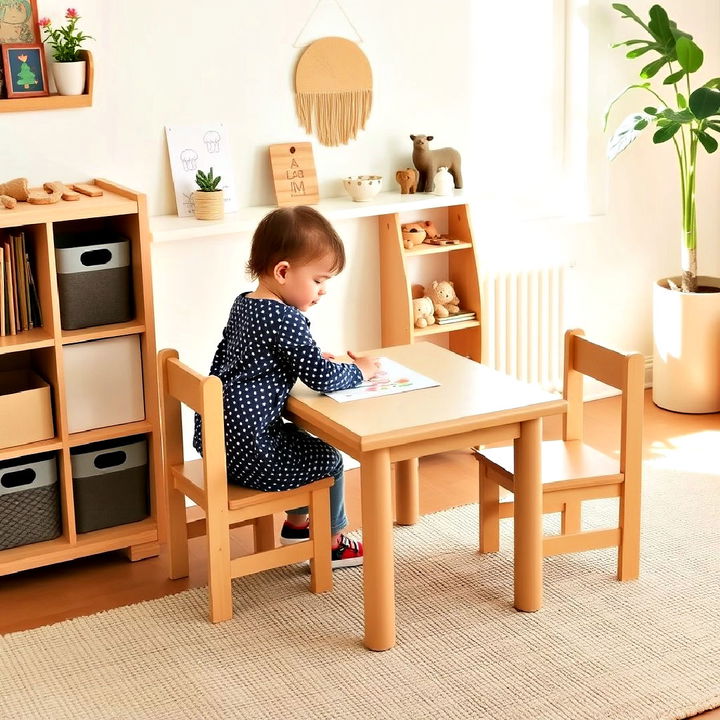
Investing in child-sized furniture, such as a small table and chair, helps create a space where children can comfortably engage in activities like drawing or eating. When furniture is appropriately sized for their bodies, toddlers can use it without needing assistance, reinforcing their independence and self-confidence. This also encourages good posture and ease of movement during tasks.
6. Accessible Art Supplies for Creativity
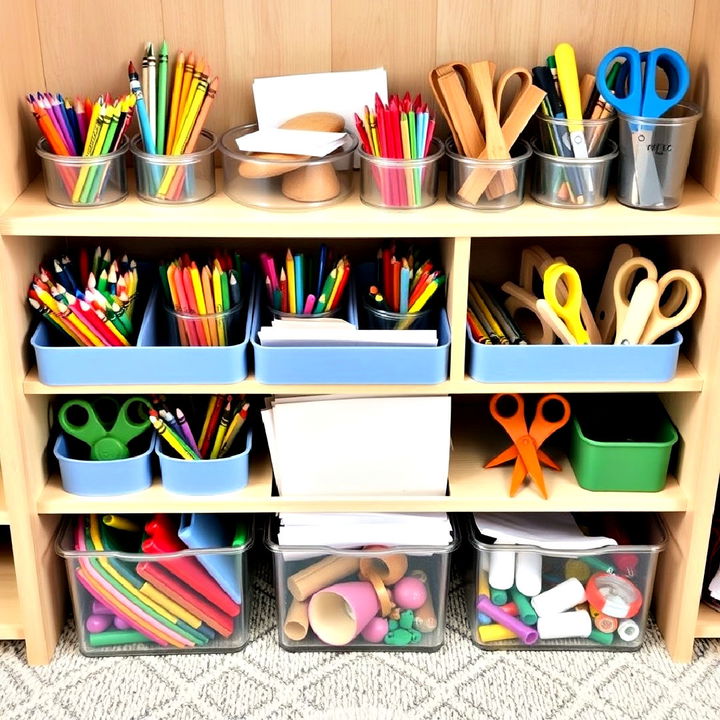
Provide accessible art supplies like crayons, paper, and child-safe scissors in low, reachable containers. This setup encourages creativity and allows children to independently explore various artistic activities. By organizing the materials neatly, kids can easily clean up after themselves, fostering responsibility. The availability of open-ended art tools promotes imaginative thinking and fine motor skill development.
7. Mirror at Child’s Eye Level
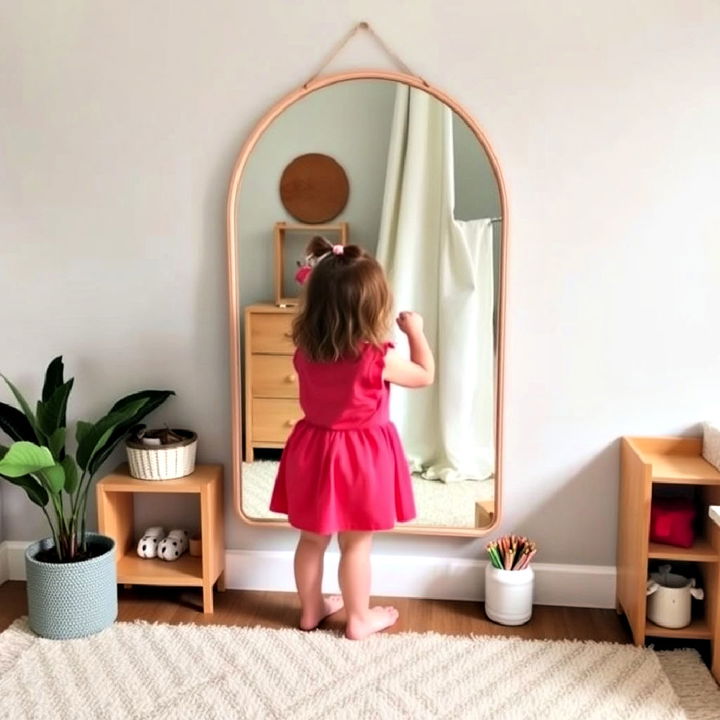
Placing a mirror at the child's eye level allows them to observe their movements and begin to understand self-awareness. This can also aid in the development of balance and coordination as they see themselves while moving around. Mirrors reflect natural light, brightening the room, and offer a visually stimulating way for children to interact with their surroundings.
8. Reading Nook for Quiet Time
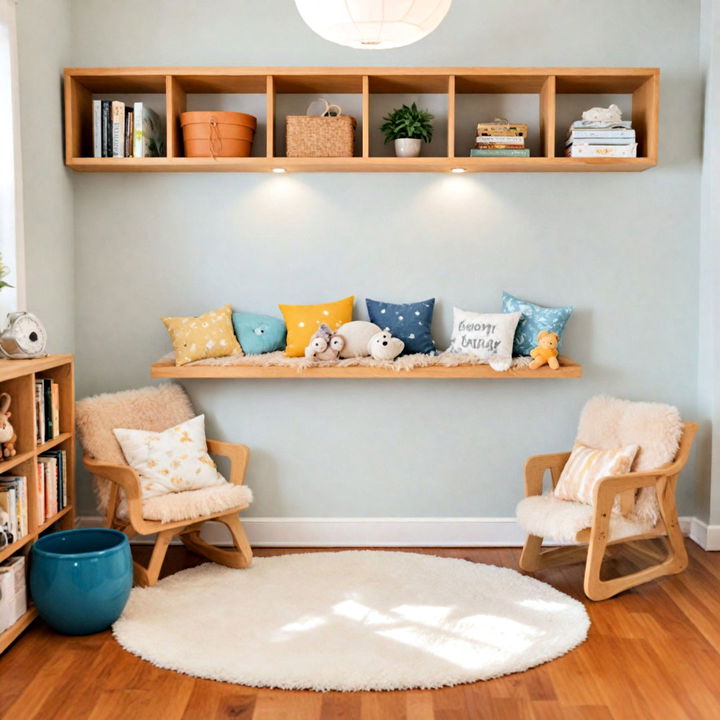
Create a peaceful and stimulating Montessori baby room designed with child-friendly furniture and open spaces. Create a cozy reading nook with a soft rug, pillows, and a low bookshelf filled with age-appropriate books. This invites children to relax and enjoy quiet time while developing their reading skills and imagination. By making the books easily accessible, they can choose stories independently, which nurtures a love for reading from an early age. Keep the area calm and inviting to encourage restful moments.
9. Nature-Inspired Decor for Calmness
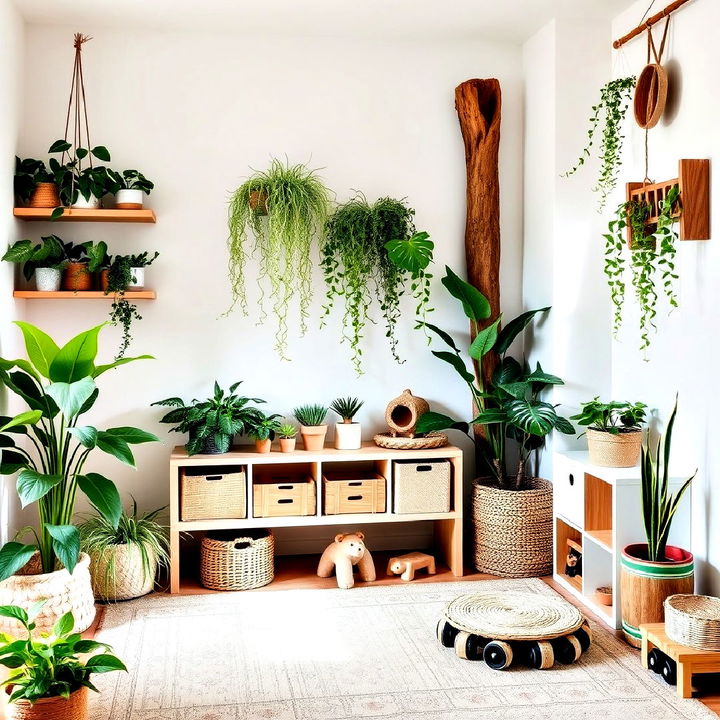
Incorporate nature-themed decor, such as plants, wood elements, and natural textures, to create a calming environment that connects children with the outdoors. Plants not only enhance the aesthetics but also help purify the air. This kind of decor promotes tranquility, grounding children in a peaceful, natural setting that can inspire curiosity about the world around them.
10. Open Space for Movement
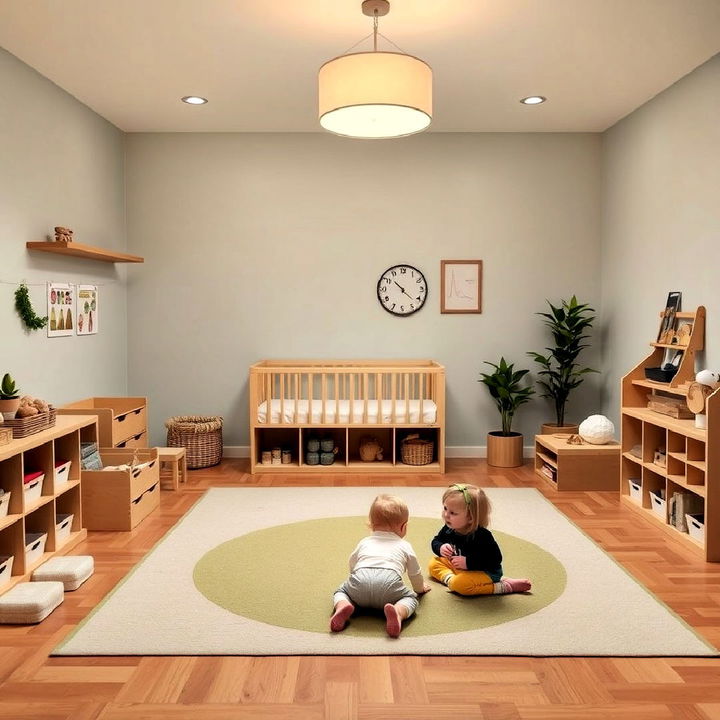
An open area in the nursery provides children with space to move freely, promoting physical development and body awareness. Whether they are crawling, walking, or running, having room to practice motor skills is essential for growth. Keep the area free from clutter and sharp objects, ensuring a safe place for children to explore their physical abilities without restriction.
11. Low-Hanging Artwork for Visual Engagement
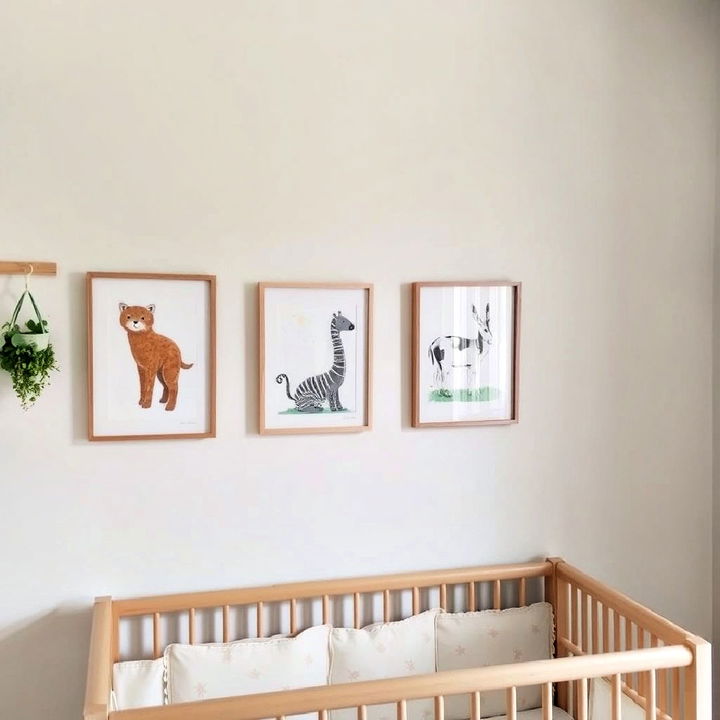
Hang artwork at a child’s eye level to encourage visual engagement and appreciation of beauty. Choose simple, realistic images such as animals, nature, or family photos to help children connect with their environment. Low-hanging artwork allows kids to interact with the visual world around them and fosters a sense of belonging and creativity. This also nurtures an early appreciation for art and aesthetics.
12. Sensory Baskets for Exploration
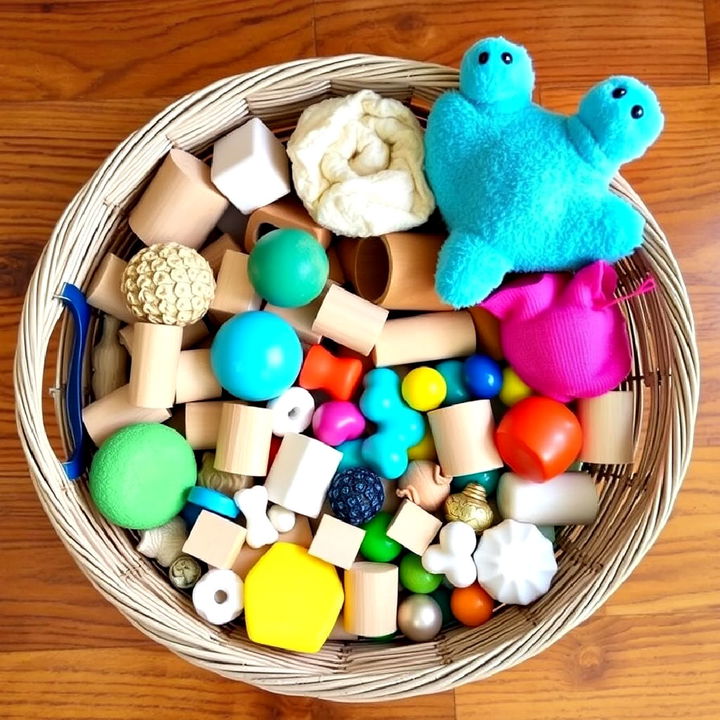
Create sensory baskets filled with objects of different textures, sizes, and shapes. These baskets provide an excellent opportunity for young children to explore and develop their sensory and cognitive skills. Items like wooden blocks, soft fabrics, or rattles encourage tactile exploration and curiosity. Rotating the objects regularly keeps the activity fresh and engaging, while supporting the development of fine motor skills.
13. Practical Life Area for Real-world Skills
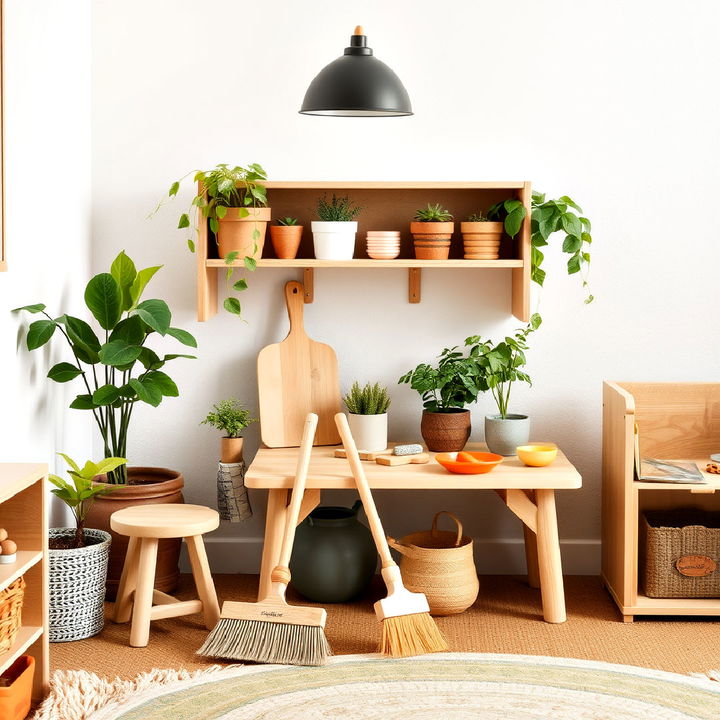
Design a small area where children can practice real-life tasks, such as sweeping with a small broom, watering plants, or sorting objects. This practical life space encourages independence and teaches responsibility. By participating in daily household activities, children develop coordination, concentration, and a sense of accomplishment. Keep the tools simple and child-friendly to ensure they can easily handle them.
14. Rotating Toys to Maintain Interest
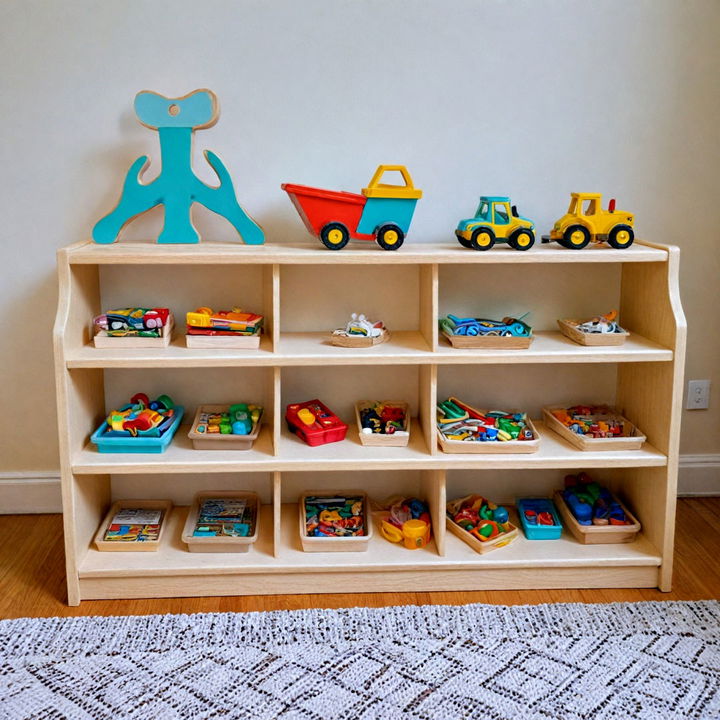
Explore beautifully designed Montessori nurseries that promote self-directed learning with natural materials and organized layouts. Rotate the toys and activities available in the nursery to prevent overstimulation and keep children engaged. When fewer toys are out, children can focus more deeply on the items they have. This practice also encourages creativity, as kids may discover new ways to use old toys. Regularly rotating toys keeps the environment dynamic and aligned with the child's current developmental needs.
15. Multi-Purpose Play Mat for Safe Play
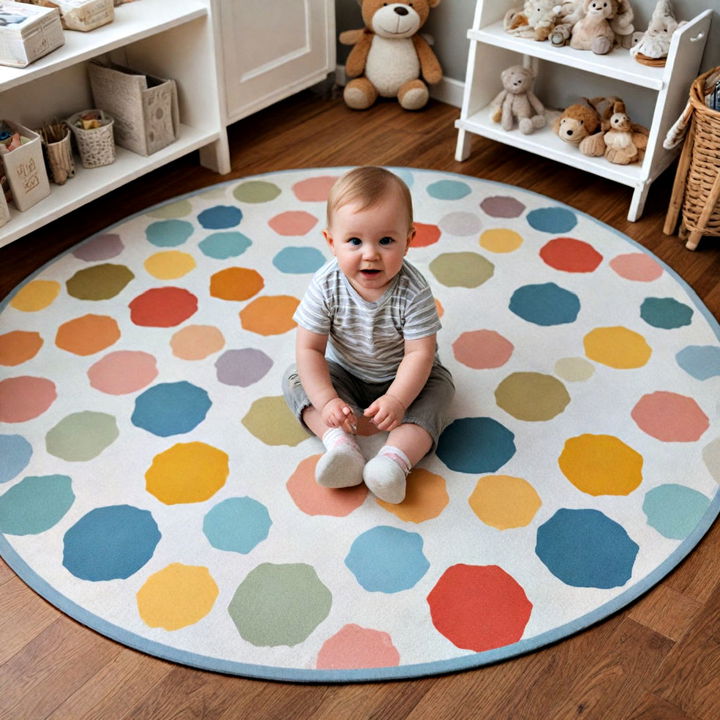
Place a soft, neutral-colored play mat in the nursery to provide a safe, comfortable area for babies to crawl, roll, and play. These mats also serve as a visual boundary for focused play. By giving them a designated spot, children can feel a sense of order and consistency during playtime. A multi-purpose mat also absorbs noise and makes clean-up easier, contributing to a peaceful and organized space.
16. Music Station for Rhythm and Sound
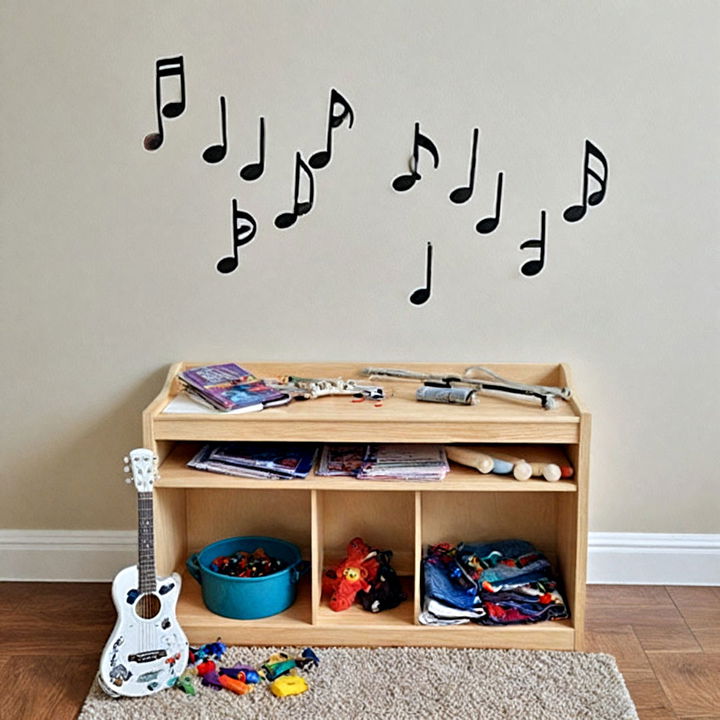
Set up a small music station with simple instruments like shakers, bells, or drums to introduce rhythm and sound to children. Encouraging exploration of different sounds helps develop auditory skills and an early appreciation for music. Playing with instruments can also promote hand-eye coordination and motor skills. Keep the instruments easily accessible so that children can explore music independently.
17. Low Hooks for Self-Care
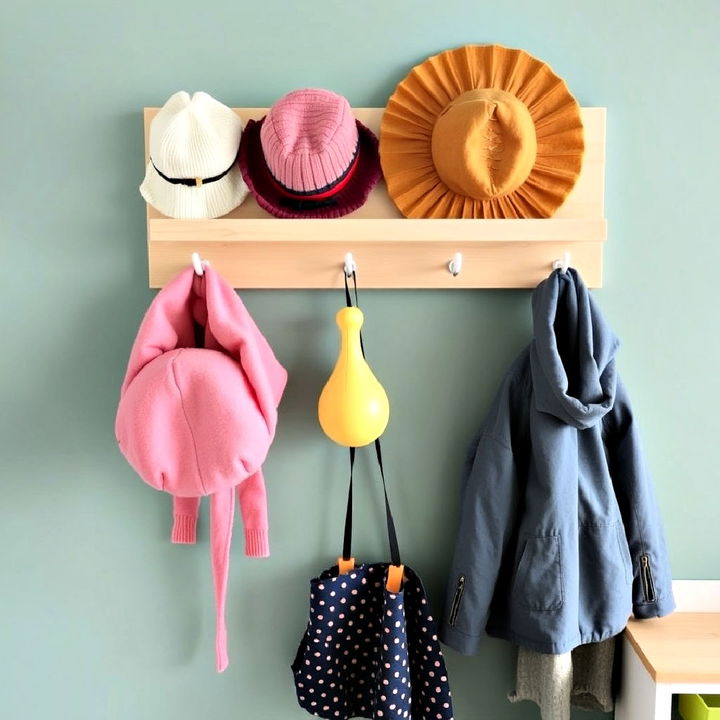
Install low hooks for hanging coats, hats, or bags to encourage independence in self-care routines. These hooks should be within the child's reach, making it easy for them to hang up their belongings on their own. This simple addition teaches responsibility and supports a sense of accomplishment as they learn to take care of their personal items.
18. Cozy Floor Cushions for Relaxation
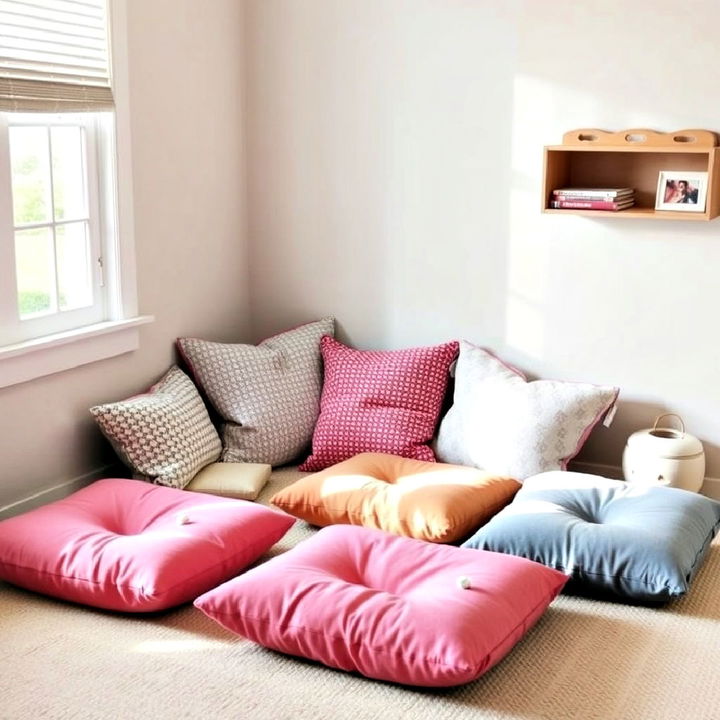
Add soft floor cushions in a cozy corner of the room, where children can rest, read, or engage in quiet activities. Cushions create a comfortable space that invites relaxation and serves as a peaceful retreat. The flexibility of movable cushions allows children to configure their seating area as they like, promoting independence and comfort in their environment.
19. Nature Table to Explore Seasons
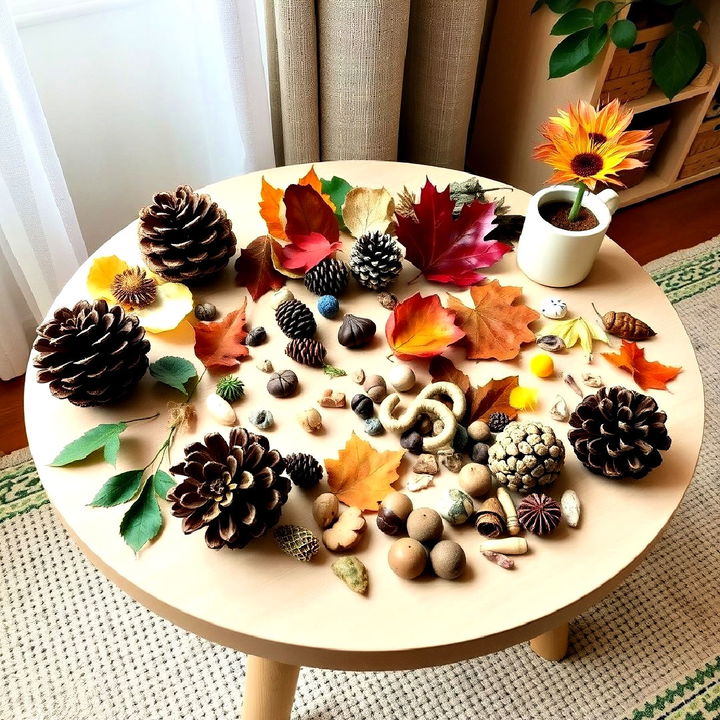
Set up a nature table in the nursery where children can explore seasonal elements like leaves, pinecones, or flowers. This interactive display changes with the seasons, fostering curiosity about the natural world and helping children observe environmental changes. Providing a space for natural items allows kids to engage with the outdoors while indoors, promoting learning through tactile experiences.
20. Quiet Corner for Calming Down
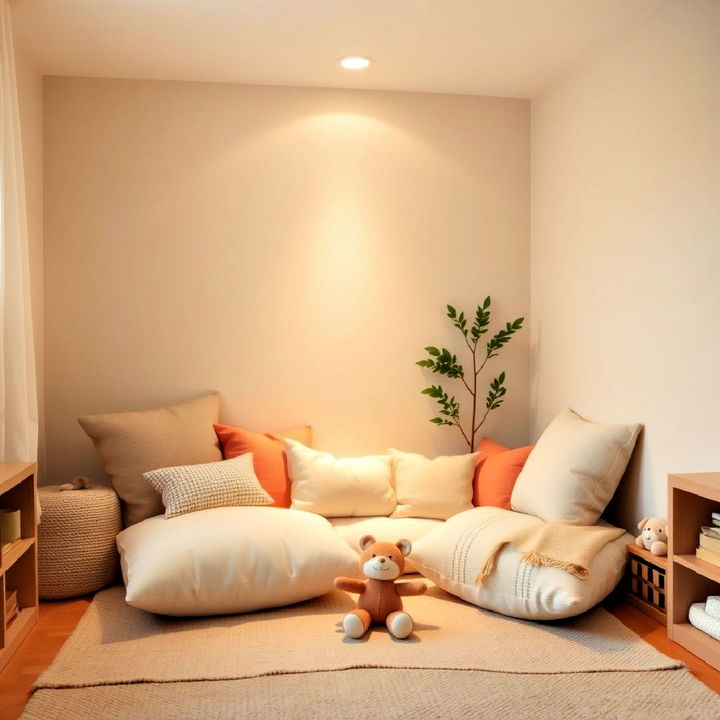
Designate a quiet corner with soft pillows, a calming light, and perhaps a few comfort objects where children can go to relax and calm down. This space offers them a retreat when they feel overwhelmed or need a break. By having a dedicated spot for relaxation, children learn to manage their emotions independently, promoting emotional regulation and self-soothing skills.
Conclusion:
Designing a Montessori nursery is about more than just aesthetics—it's about creating an intentional space that supports your child’s natural development. Incorporating elements like low shelves, floor beds, and nature-inspired decor nurtures independence, while sensory baskets and practical life areas ignite curiosity and real-world learning. By keeping the environment simple, yet engaging, you provide the perfect backdrop for your child to explore, grow, and thrive.
Key Points:
- Low shelves and child-sized furniture promote independence by allowing children to access their toys and belongings easily.
- Floor beds offer freedom of movement, enabling babies and toddlers to move in and out of bed on their own.
- Minimalist decor reduces overstimulation, creating a calm and focused environment.
- Natural lighting and nature-inspired decor foster a soothing atmosphere for relaxation and play.
- Accessible art supplies and sensory baskets encourage creativity and exploration, key components of Montessori learning.
- Practical life areas introduce real-world skills early, from dressing themselves to tidying up their space.
- Rotating toys maintain your child’s interest and reduce clutter, helping to create a well-organized room.
- Quiet corners and cozy reading nooks provide spaces for your child to calm down or enjoy quiet time.
What to Do Next:
Now that you're inspired by these Montessori nursery ideas, take the next step in creating a nurturing space for your child! Start by assessing your nursery layout and identifying areas where you can incorporate Montessori principles. Whether it’s adding low shelves, rearranging furniture for better flow, or introducing natural elements, small changes can have a big impact. Ready to start your Montessori journey? Gather the essentials and begin transforming your nursery into a place where your child can explore, grow, and thrive independently!